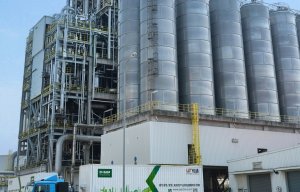
Loopamid now commercially available
The system aims at enhancing the cost-effectiveness of manufacturing thermoplastic carbon-fibre composites, according to SGL Group.

9th March 2015
Innovation in Textiles
|
Wiesbaden/Ludwigshafen
SGL Group and the chemical company BASF have concluded the joint research of a new composite material system as an important development step of their collaboration.
The system aims at enhancing the cost-effectiveness of manufacturing thermoplastic carbon-fibre composites, for example, in injection procedures and reaction injection moulding. The composite is based on a reactive polyamide system and compatible carbon fibres.
A carbon-fibre surface—or sizing—specially designed for the matrix system as well as tailored thermoplastic reactive systems mean that lightweight structural components for, say, the automotive industry can now be manufactured quickly and easily, the company reports.
As part of this collaborative project, SGL Group developed a new sizing formulation for the carbon fibres. In addition, special processes for manufacturing carbon-fibre-based textiles such as fabrics and braidings were also developed. To produce Non-Crimp-Fabrics (NCF), special threads are used that enable processing in the reactive polyamide system.
BASF’s role in this project was to process SGL Group’s newly developed carbon fibres using the T-RTM technique and to characterize them comprehensively both chemically and mechanically. The BASF research team is continuing to work intensively on the development of caprolactam-based thermoplastic reactive systems.
“The interaction of all components is of central importance for innovative composites based on reactive polyamide. With its extensive material knowhow, SGL Group brought a range of tailored solutions for sizings and fibre processing to this collaborative project,” commented Tilo Hauke, Head of Research at SGL Group.
“In close collaboration with plant manufacturers as well as tiers and automotive OEMs, we are working on the development of robust polyamid 6 carbon-fibre composite systems. The mechanical characteristic values arising from the interaction of the fibre and matrix are crucial input parameters for our simulation tool Ultrasim,” explained Josef R. Wünsch, head of Structural Materials and Systems Research at BASF.
“We are currently working intensively on enhancing our simulation expertise for reactive systems so that we can provide our customers with expert support for part design and optimization.”
This collaboration between SGL Group and BASF was launched back in October 2012. On the basis of the now-complete material research, the transfer of the special systems made from carbon fibres and matrices into specific applications of customers in the automotive industry is now under way.
Thermoplastics-based carbon-fibre composites combine the properties of carbon fibres such as high rigidity and low weight with the familiar processing advantages of thermoplastics, allowing them to be formed, recycled and welded.
This helps make carbon fibre technology an even more viable proposition for large-scale production in a number of different applications, the company reports.

Business intelligence for the fibre, textiles and apparel industries: technologies, innovations, markets, investments, trade policy, sourcing, strategy...
Find out more